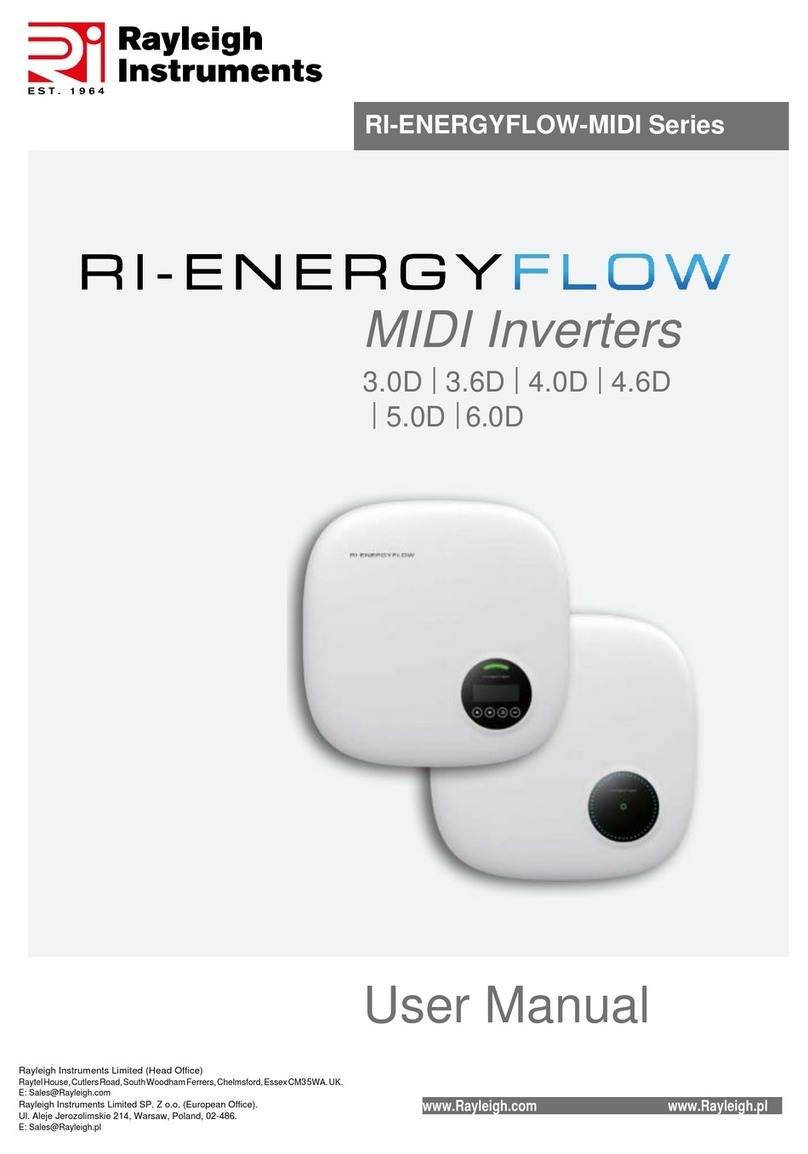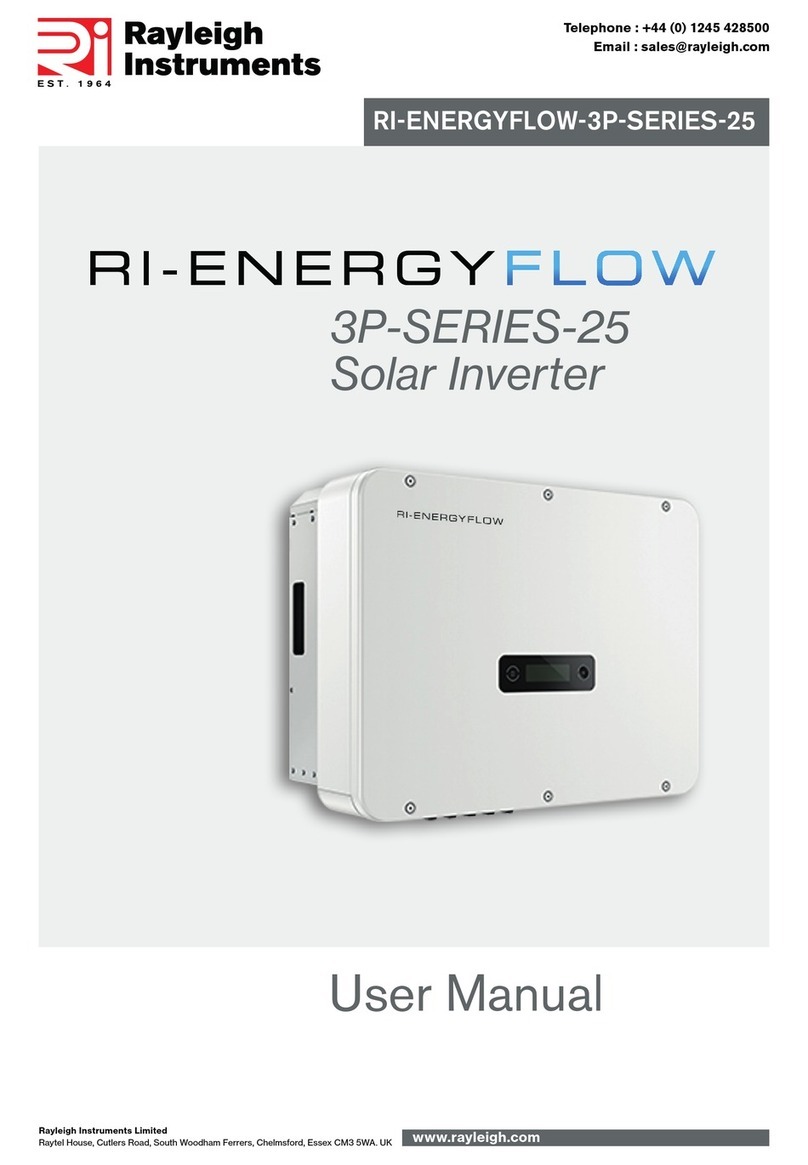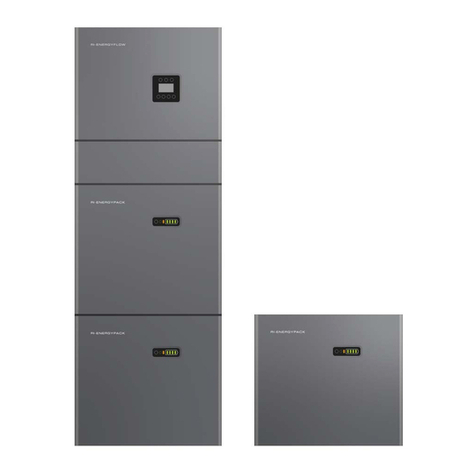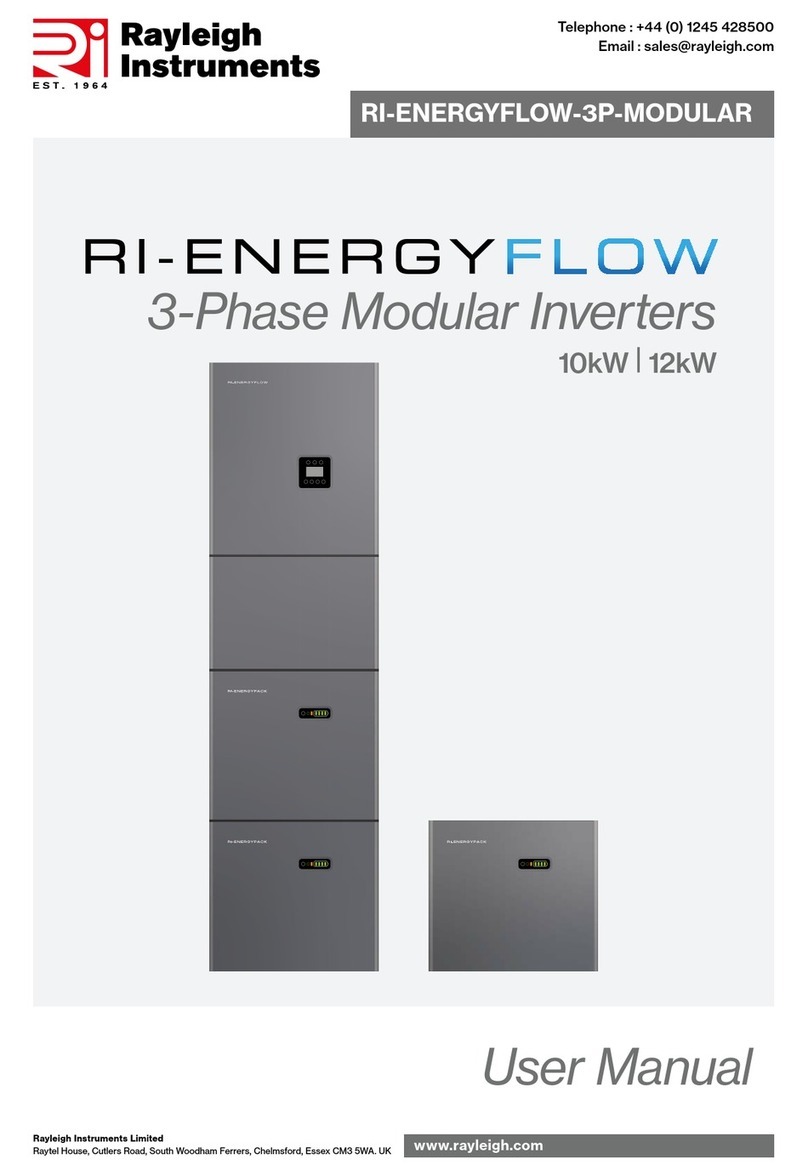
2.4 Grid codes
16.3KG 16.3KG 16.3KG 18.3KG 18.3KG 18.3KG 21.6KG
98.1%
97.5%
99.9%
97.8%
97.2%
99.9%
Integrated
Integrated
Integrated
Integrated
Integrated
Integrated
Integrated
Integrated
Integrated (Type III)
Integrated (Type III)
395 x 330 x 185mm 455x390x160mm 455x390x190mm
LCD
RS485 (Standard), Wifi or GPRS
-25 ℃~ 60 ℃
0-100%
≤ 4000m
< 0.2W
Transformerless
Natural Convection
IP65
< 30dB
5 / 7 / 10 years
C10/11, PEA, MEA, G98, G99, EN50549,CEI 0-21, CEI 0-16, IEC61727, IEC62116,
IEC60068, IEC61683
IEC 62109-1, IEC 62109-2
EN 61000-3-2, EN 61000-3-3, EN 61000-3-11, EN 61000-3-12, EN 61000-6-2,
EN 61000-6-3, IEC 61000-4-16, IEC 61000-4-18, 4-29
Protection
DC Insulation Monitoring
Input Reverse Polarity Protection
Anti-island Protection
Residual Current Monitoring
Over-heat Protection
AC Overcurrent Protection
AC Short-circuit Protection
AC Overvoltage Protection
DC Surge Protection
AC Surge Protection
General Data
Size(Width*Height*Depth)
Weight
User Interface
Communication
Ambient Temperature Range
Relative Humidity
Operating Altitude
Standby Self Consumption
Topology
Cooling
Protection Grades
Noise
Warranty
Certifications & Standards
Grid Regulation
Safety Regulation
EMC
Belgium power Grid.
UK power Grid.
China power Grid, meet Grid standards “CN-NBT”.
France power Grid, meet Grid standards “VDE 0126”.
Poland power Grid.
Germany power Grid, meet Grid standards “BDEW-MV”.
Germany power Grid, meet Grid standards “VDE 0126”.
Italy power Grid, meet Grid standards “CEI 0-16”.
UK power Grid.
Greece Island power Grid.
Czech Republic power Grid, meet Grid standards “EN50438Y2007-CZ”.
India power Grid.
Korea power Grid.
Sweden power Grid.
China power Grid, Grid voltage range:160-290V
Grid frequency range:47-53HZ.
China power Grid, meet standards“CQC ”.
India power Grid, meet Grid standards “IEC61727”.
Brazil power Grid , meet Grid standards “NBT 16150”.
Sri Lanka power Grid, meet Grid standards “IEC61727”.
Mexico power Grid, meet Grid standards “IEC61727 60HZ”.
New Zealand power Grid, meet Grid standards “NZ4777”.
Philippines power Grid, meet Grid standards “IEC61727 60HZ spec”.
Sri Lanka power Grid, Grid voltage range:160-290V, Grid frequency range:47-53HZ.
Thailand power Grid.
Thailand power Grid, Grid voltage range:160-290V, Grid frequency range:47-53HZ.
Vietnam power Grid.
Vietnam power Grid, Grid voltage range:160-290V, Grid frequency range:47-53HZ.
Thailand power Grid.
Thailand power Grid, Grid voltage range:160-290V, Grid frequency range:47-53HZ.
Tunisia power Grid.
Tunisia power Grid, Grid voltage range:160-290V, Grid frequency range:47-53HZ.
C10/11
G59
China
VDE0126-FR
EN50549-PL
BDEW-DE
VDE0126-DE
CEI0-16
G83
Greece Island
EN50549-CZ
IEC61727
Korea
EN50549-SW
China-W
China-H
IEC61727-IN
Brazil
IEC61727-SL
Mexico
NZ4777
Philippines
IEC61727-SL-W
PEA
PEA-W
IEC61627-VN
IEC61627-VN-W
MEA
MEA-W
Tunisia
Tunisia-W
9
10
11
12
13
14
15
16
17
18
19
20
21
22
23
24
25
26
27
28
29
30
31
32
33
34
35
36
37
38
39
DescriptionNational/Regional Grid Code
No.
Telephone : +44 (0) 1245 428500
Email : sales@rayleigh.com
7
































